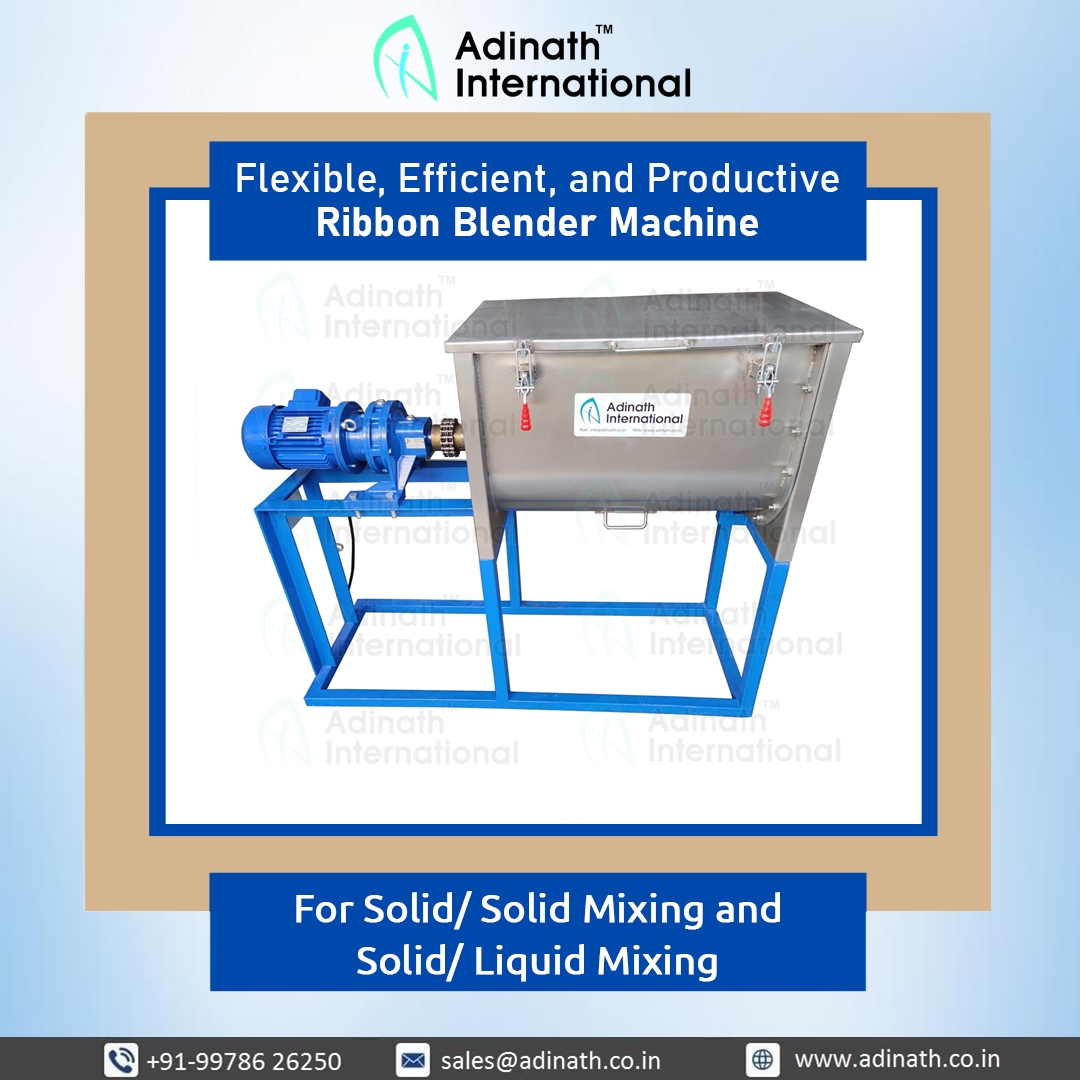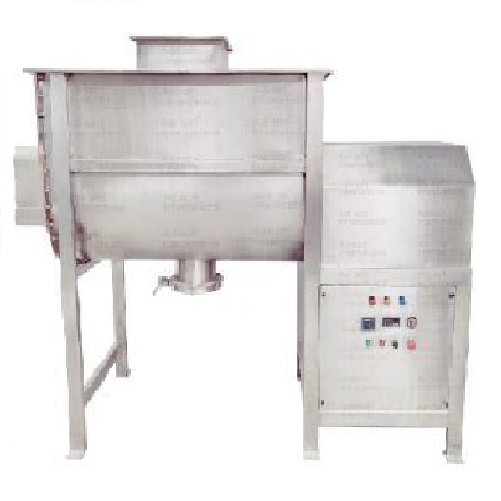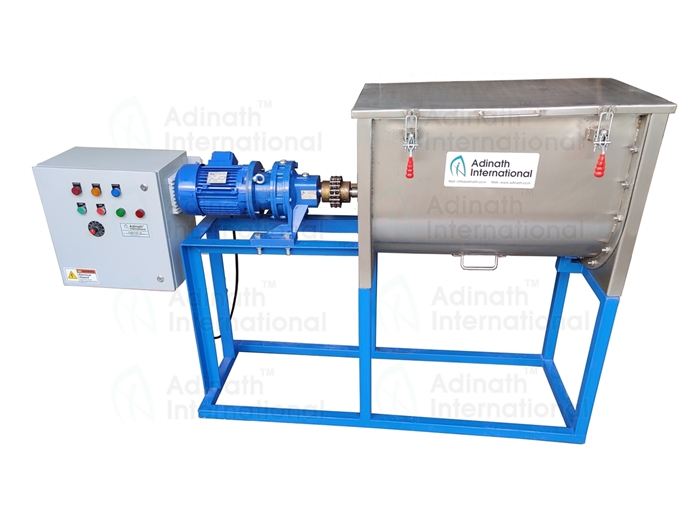For blending powders and granular materials, ribbon blender are frequently employed in a variety of industries. To ensure best performance and longevity, they need to be properly maintained, just like any other piece of equipment. Routine maintenance neglect can result in expensive repairs, downtime, and even safety risks.
For effective powder mixing, a well-tested technique is ribbon blenders. They have a twin helical ribbon agitator moving inside a U-shaped horizontal trough. The inner ribbon has the ability to move material in the opposite direction, sending it in the direction of the discharge aperture, while the outer ribbon has a perfect pitch that moves material radially. This alternation of motion encourages thorough mixing and aids in reducing product migration during switchovers.
The significance of routine maintenance
The smooth operation and long-term performance of ribbon blenders depend on routine maintenance. Numerous issues, including material accumulation, bearing failure, motor overload, and seal leakage, can arise if maintenance is neglected. These problems may result in decreased effectiveness, higher energy usage, and potentially safety risks. Therefore, it’s crucial to adhere to a maintenance schedule and carry out regular inspections to find and address any potential issues before they worsen.

Each time you use the blender, clean it.
A basic industrial mixing device known as a ribbon blender (also known as a ribbon mixer) consists of a trough-shaped casing that is typically two to three times longer than it is wide.
It’s crucial to clean the blender after each use to avoid material buildup, microbial infection, and rust. Remove any leftover debris from the trough, agitator, and discharge valve using a soft-bristle brush, a vacuum, or compressed air. Additionally, use a clean, dry cloth or a light detergent solution to clean the surfaces. Avoid using harsh chemicals or abrasive materials that could harm the equipment.
The trough’s center is cut out for a horizontal agitator shaft, which has two helical ribbons attached to it on either side. Material is moved toward the discharge hole by the pitch of the outer ribbon while it is moved away from it by the pitch of the inner ribbon.

Clean the Ribbon Blender Agitator.
The component of a Ribbon Blender that stirs the substance inside the jar is called the agitator. In order to continuously transport material inside the trough, the agitator frequently comprises of metal ribbons that are twisted and balanced.
A U-shaped horizontal trough and a specially made agitator with inner and outer helical blades make up a ribbon blenders. To encourage thorough material blending in quick cycle times, these blades move the material axially, in opposite directions, and radially.
When the material possesses shear sensitivity, this combination works exceptionally well for blending powdered and bulk materials. The fact that these mixers can only support a particular amount of loading must be kept in mind, too.
Verify the Ribbon Blender Seals
The seals shield the drive system and bearings from contamination and stop material leaking from the trough. Regularly check the seals for wear, cracks, or leaks. To avoid material leakage and bearing failure, promptly replace any worn or broken seals. Additionally, confirm that the seals are installed and aligned properly.
It’s crucial to maintain the shaft within the mixing tank sealed when a ribbon blenders is operating. This reduces the risk of external contamination, increases the lifespan of the blender’s bearings, and prevents product leakage, which can lead to equipment failure.
Depending on the particular ribbon blenders you have, you can apply a rotating shaft seal to either one or both ends of the shaft. These specialist shaft seals are made to help stop product leakage and are simple to install.
Your operation’s effectiveness and productivity can be guaranteed with a ribbon blenders that is kept up to date. Additionally, it minimizes expenditures while increasing production and reducing downtime. The easiest way to maintain your ribbon blenders operating at its prime is to follow these maintenance advice for ribbon mixers.

Keep an eye on the electrical and motor components.
The ribbon blender electrical and motor components must be regularly inspected because they are essential to how well it works. Start by listening for any strange noises or overheating symptoms coming from the motor. Check the wiring, switches, fuses, and other electrical parts for signs of wear or damage. Make sure all connections are tight and secure and that the wiring is correctly grounded. Get in touch with a skilled expert for additional inspection and repairs if you discover any problems with the motor or electrical components. These parts can go neglected, which can result in expensive repairs, downtime, and even safety risks. To maintain the best performance and longevity of your ribbon blenders, it is crucial to include them in your normal maintenance schedule and to check on them frequently.
Ribbon blender are employed in a wide variety of industrial processes, including dry cleaning powder production, chemical blending, and food preparation. The fundamental structure consists of a horizontal trough with a shaft running through the center, inside of which are rotating mixing blades or “ribbons.”
These ribbons transfer shear, which aids in blending the ingredients, between the product and the agitator. These ribbons come in many designs with changes in the quantity and kind of blades or ribbons used, and they can be stirred by paddles, blades, or ploughs.
Ribbon blenders should be cleaned thoroughly and frequently for optimum operation to avoid residue buildup and production-related contamination issues. Because of this, either impingement or rotary jet head cleansers can be used to effectively and completely clean ribbon blenders during CIP (cleaning in situ).
Regularly lubricate the bearings
Regular lubrication of the bearings is essential to avoiding failure, overheating, and premature wear and tear. Every month, check the bearings and add lubrication as necessary. Use a grease of the highest caliber that is suitable for the bearing’s construction and operation environment. Make sure you use the proper amount of lubricant because using too little or too much can both be dangerous.


